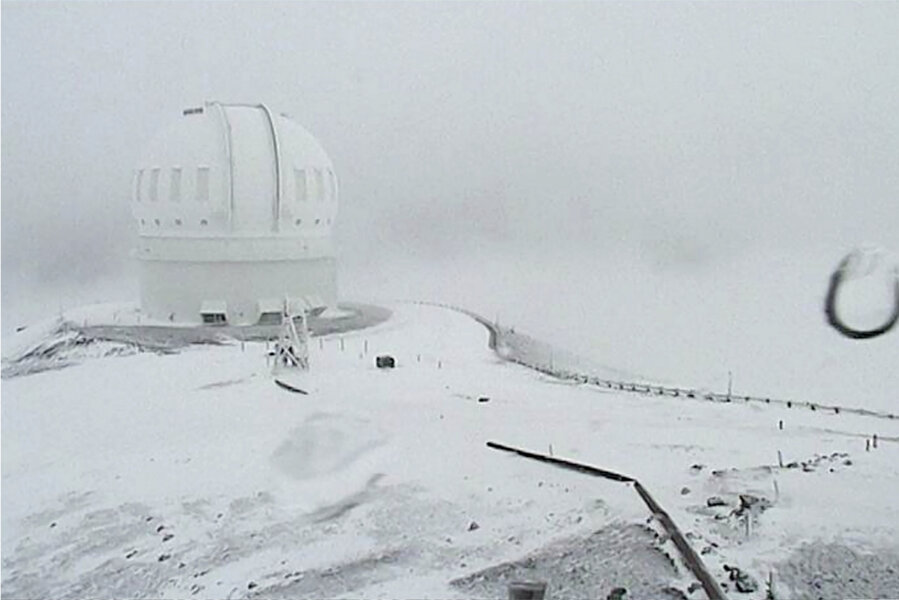Snow in Hawaii: Why the locals aren't surprised
Loading...
| HONOLULU
The summits of Hawaii's Big Island could get almost a foot of snow, with a winter storm warning in effect through Sunday.
Yes, it snows in Hawaii, Matthew Foster, a meteorologist with the National Weather Service in Honolulu, said he had to explain to some surprised out-of-state callers Friday.
"Typically when we get these snow events, it does get a lot of attention," he said, adding that he explains to curious callers that the snow is falling in a small, remote area where there are mainly telescopes and scientists. "We do have very high mountains here."
Once they realize the heights of the mountains, snow in the island state makes a little more sense, said Ryan Lyman, forecast meteorologist with the Mauna Kea Weather Center. Mauna Kea is nearly 14,000 feet above sea level.
The weather service forecasts new accumulations of about a foot of snow over the weekend. Temperatures are in the mid-20s to lower-30s.
That's a significant amount of snowfall, but not uncommon for the summits, meteorologists say.
Lyman said recent winters have seen totals of 30 to 36 inches.
It's enough snow to shut down operations on Mauna Kea, Lyman said. The mountain's access road is expected to remain closed until next week, he said.
The weather service doesn't keep track of what the record amounts of snowfall are on the summits. Heavy snow is often accompanied by wind, which create drifts that make it difficult to accurately measure snowfall, Lyman said.
Abundant snow on Mauna Loa's 13,677-foot summit could be seen at sunset Thursday from parts of Hawaii Volcanoes National Park, said park spokeswoman Jessica Ferracane.
There was heavy rain in other parts of the state Friday, with a flash flood warning in effect for Oahu, Kauai and the Big Island.
___
Follow Jennifer Sinco Kelleher at http://www.twitter.com/JenHapa. Her work can be found at http://bigstory.ap.org/content/jennifer-sinco-kelleher.





